Extraordinary Tito-era monuments from former Yugoslavia
Writing about any niche subject is always tricky, particularly when there is already only one truly definitive source on the subject. You either need to come up with something completely original and unique or use that one definitive source to garner the information required to create an article of your own.
Kirsty and I have now made three trips in as many years to the Balkan countries that originally formed the Republic of Yugoslavia with the express purpose of searching for, and photographing Tito-era World War II-related monuments and memorials known as spomeniks. Of the few hundred or so that are still in existence, we have now seen just over seventy of them, yet, apart from a post we wrote about our road trip around Serbia (our first time in the region specifically looking for spomeniks) in which we briefly touched on the subject, and the occasional post on Facebook, we haven’t written that much about them.
It’s not that we don’t want to, or that we haven’t had the inclination to put something detailed together. What’s stopping us is something quite simple. Every time we’ve researched each of the three trips, we’ve used just one point of reference, a website called Spomenik Database. The person behind the creation of this site is a guy called Donald Niebyl and he is so generous with his information, which not only includes detailed knowledge about spomeniks (both general and specific) but also photographs, maps, GPS coordinates, details about road conditions and so on, that we question what we can add that would either be completely different, or improve what he has already provided. Not a lot, is the honest answer but having now spent a reasonable amount of time and energy tracking these fascinating memorials down, we want to at least showcase some of the spomeniks we have photographed and that is what this post is all about.
I will endeavour to explain in my own words a little more about what spomeniks are and how they came into being and a little background history, but I won’t go into any more detail than that. If you want to know more, either go to the general Spomenik Database website or click on the specific links for each spomenik alongside our photographs.
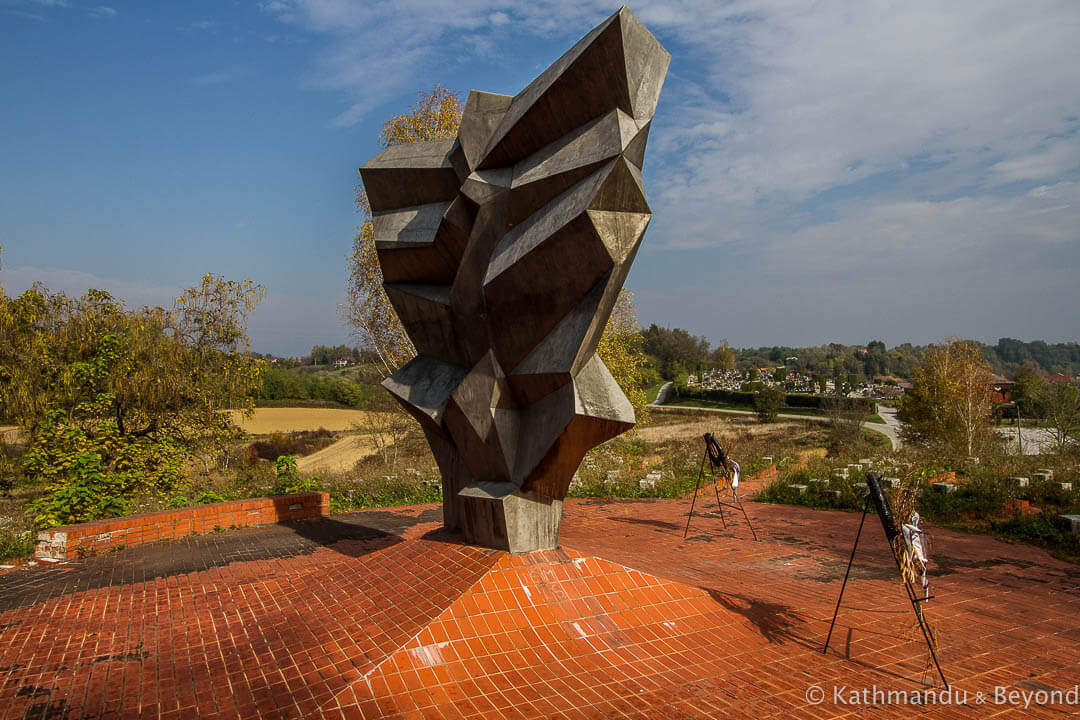
What are spomeniks and why were they created?
Spomenik is a Serbo-Croat/Slovenian word meaning “monument”.
There was a strong resistance movement in Yugoslavia during World War II, which is more commonly known as the National Liberation War or National Liberation Struggle in this part of the world. The communist-led Yugoslav Partisans, under the command of the revolutionary (and future president) Josip Broz “Tito”, fought numerous battles against Axis forces (Germany and her allies) throughout many parts of Yugoslavia. Thousands died, not only soldiers but civilians also (including numerous inmates of concentration camps), and to commemorate the loss of life, battles fought and atrocities that took place during that time, over one thousand spomeniks were erected all over Yugoslavia from the 1960s through to the 1980s. In short, spomeniks are memorials to anti-fascism.
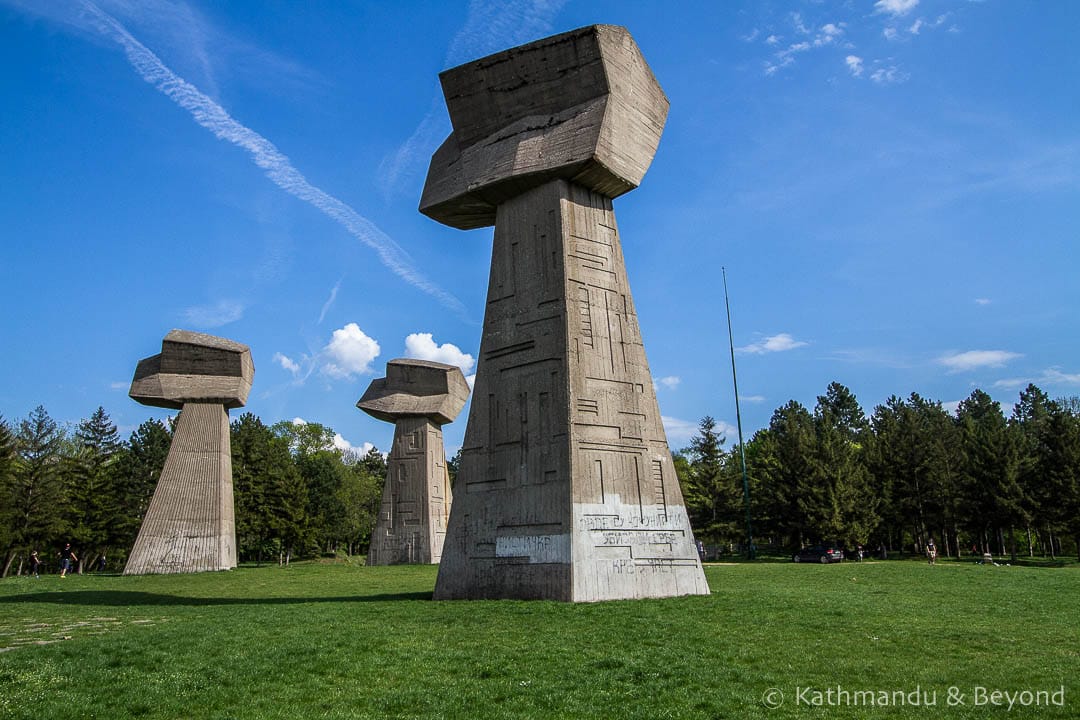
The reasons (there are a few) for their bizarre and often futuristic design, are interesting ones. After the end of the Second World War and the eventual establishment of the Socialist Federal Republic of Yugoslavia (in 1963), Tito and his government did all they could to repress ethnic nationalism within the country and present a united Yugoslavia (*).
(*) He managed to achieve this while he was alive (and in power) but in the decade after his death (in 1980), racial tension worsened and eventually culminated in what is collectively known as the Yugoslav Wars, a series of ethnic-related conflicts that are often described as the deadliest in Europe since the Second World War.
Tito was in charge of a newly formed federation that included both former partisans and those who fought alongside the Axis forces (Croatian fascists known as Ustashe for example) during World War II and one of the reasons for the unusual design of many of the spomeniks is because architects and sculptors alike were briefed to try and create something that would not offend either side.
Another consideration was the fact that Tito had distanced himself from Stalin and the Soviet Union after the war ended and he wanted to get away from the Soviet-style monuments that were being erected in neighbouring countries such as Bulgaria and Romania. And the final rationale behind why they look so surreal is simply related to the era. Abstract and modern creations were in fashion, especially during the ‘60s and ‘70s, and Yugoslavian architects and sculptors were naturally influenced by the style.
When you begin exploring spomeniks in earnest, you soon realise the huge contrasts in their current state and condition. Some are immaculately well kept, some have museums (and even hotels) attached to them and are located in specifically created parks, while others are, at best neglected and in poor condition, and worst case, vandalised and/or heavily destroyed with barely a skeleton shell remaining.
Unfortunately, these days the number of poorly maintained spomeniks outstrips those that are kept in good condition. As mentioned above, of the thousand-plus that once existed, only a couple of hundred of them remain today. Not everyone in the region saw or does see them for what they truly represent and many spomeniks were destroyed during the Yugoslav Wars, while others were either vandalised, plundered for anything of value, or simply forgotten about and reclaimed by nature.
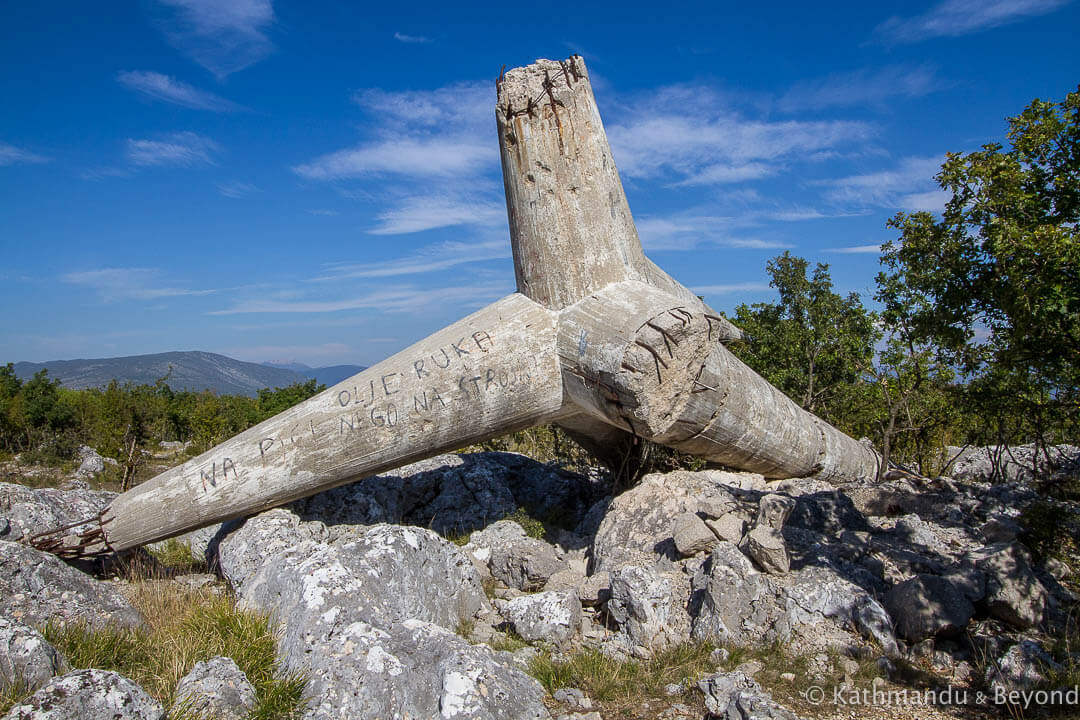
Oddly enough, it is some of the less-maintained spomeniks that fascinate us the most (although we couldn’t resist predominately showcasing the most imposing ones here). They are often more atmospheric and in most cases, harder to reach which in turn provides us with a greater sense of achievement when we succeed in locating them. Even with a set of reasonably accurate coordinates, quite a few of the seventy-something spomeniks we have visited so far have been quite difficult to find and/or to get to. With the remote ones, on several occasions we have found ourselves on unpaved roads or dirt tracks wondering if we are going in the right direction and worrying about whether our hire car is going to handle the terrain or not (*).
(*) The Spomenik Database will often highlight roads (read tracks) that should be avoided. This is sound advice and should be adhered to, even if it means making a lengthy detour. Another word of warning: don’t always trust Google Maps in this part of the world!
We try and read up on the events that took place at the scene before arriving at a spomenik as it helps to put it in perspective. Another thing I would add is that in about 70% of our visits, we have the memorial to ourselves, and can appreciate the history in solitude. It’s only when a spomenik is situated in a park or within the boundaries of a city or town, for example, that we normally encounter other people – the elderly taking the air, dog walkers, kids who are simply hanging around, and sometimes groups of people having a picnic or a BBQ. Normally, however, we are the only two looking at the monument.
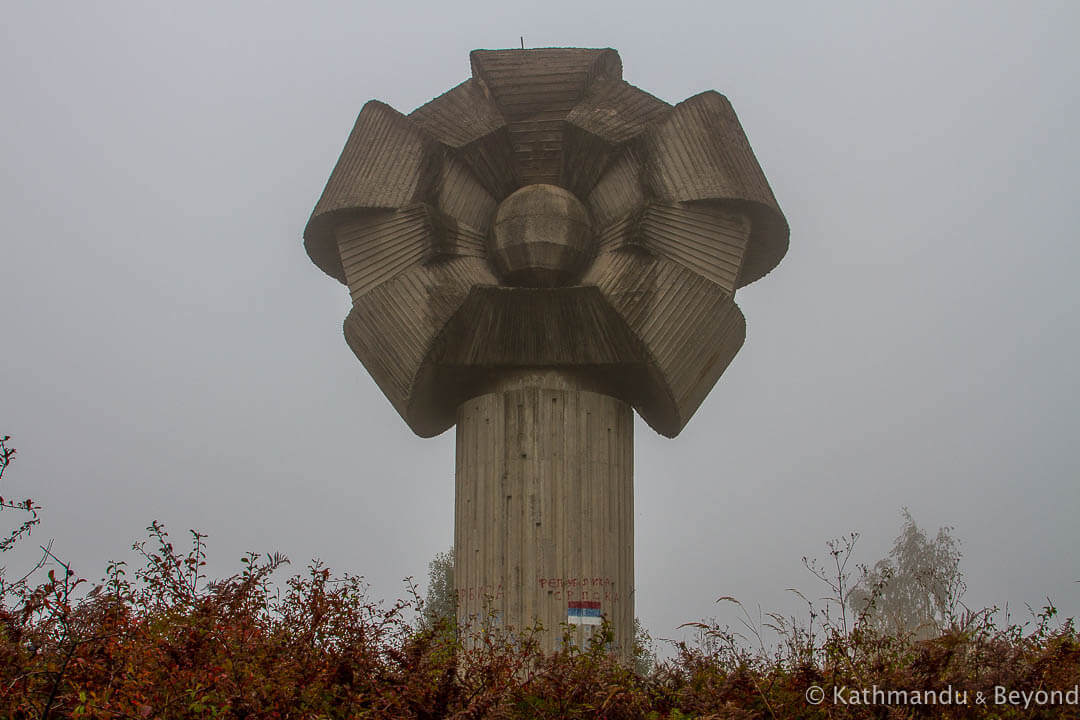
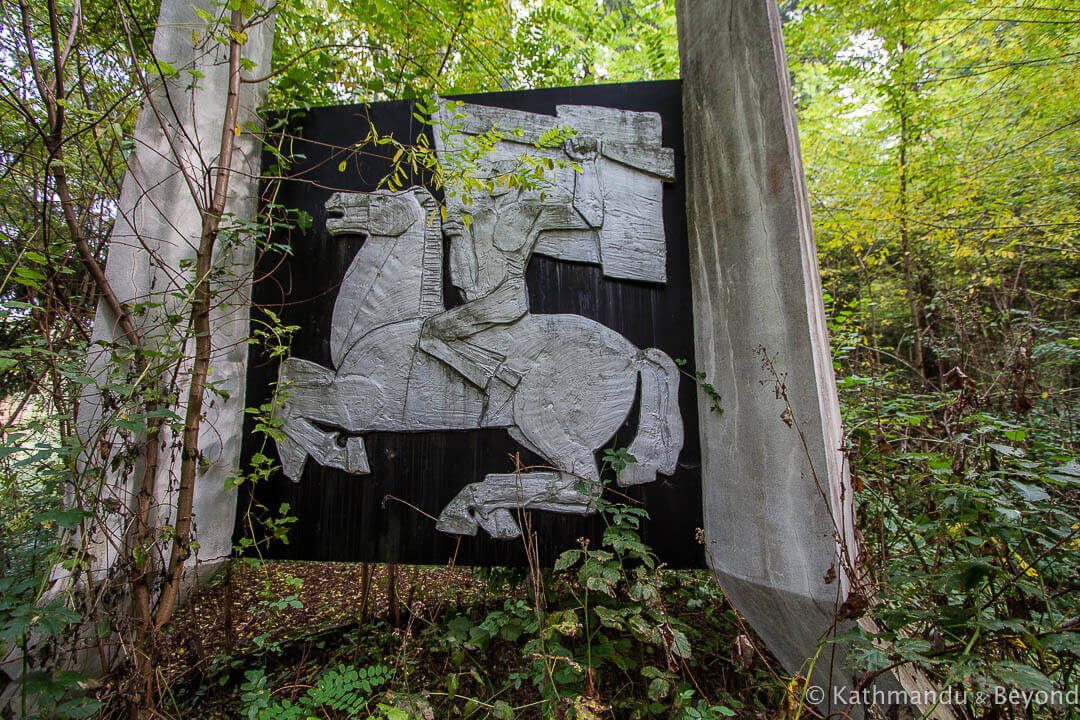
We enjoy visiting each and every one of the seven countries that once constituted Yugoslavia and we are always keen to return. I think, even without searching for spomeniks as our primary goal, we would keep returning to this part of the world again and again but the beauty of creating an itinerary based around spomeniks is that it means we get to spend time in little-visited pockets of the region, see lots of incredible scenery and, more often than not, have the opportunity to sleep in random places which, in turn, has resulted in us experiencing some wonderful Balkan hospitality. Every now and then, we wonder why on earth we’ve travelled 100km or more to some back-of-beyond location that is well off our intended route to see a monument that, at best, can only be described as mediocre, but this is the exception rather than the norm and our three spomenik-road-trips rank as one of the highlights of our ten years of full-time travel.
We’ve got another trip in the pipeline, this time to Slovenia, Istrian Croatia, and northern Serbia but, as of yet, no firm dates. In the meantime, below are some of what we consider to be the most captivating spomeniks we have seen.
Standout spomeniks for us include Kadinjača Memorial Complex near Užice in Serbia. Situated high up and with outstanding views of the surrounding countryside, we’ve visited this memorial on two occasions, once when it was covered in knee-deep snow and then again in the late afternoon on a glorious summer’s day. There was a marked difference between each visit as the weather conditions produced contrasting landscapes.
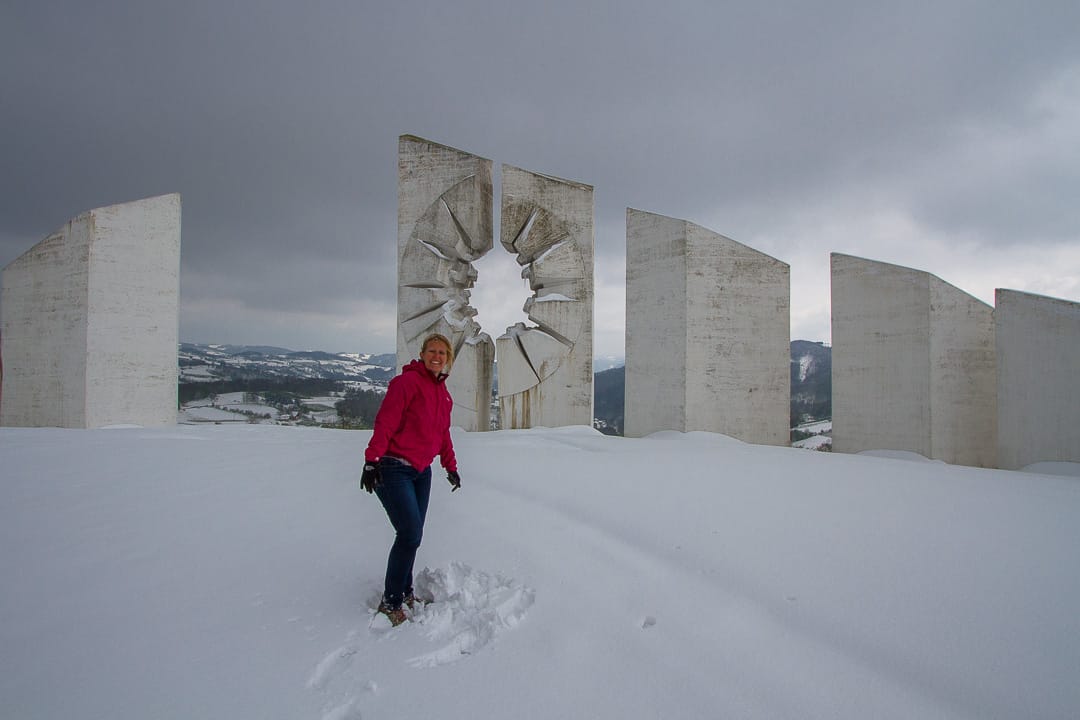
The ‘Seagull Wings Monument’ in Podgora, Croatia really fascinated me. The design is such that it looks completely different depending on the viewing angle and we spent ages wandering around the base of this particular spomenik. Another one we also spent quite a while looking at was the ‘Monument to the uprising of the people of Kordun and Banija’ inside Petrova Gora National Park (also in Croatia). Although not strictly allowed, you can enter this hulk of a memorial and eventually reach the rooftop.
I defy anyone to not be impressed by the sheer scale of the ‘Battle of Sutjeska Memorial Monument Complex’ in the Valley of Heroes in Tjentište, Bosnia & Herzegovina. In fact, this is Kirsty’s favourite spomenik, while mine is the abstract ‘Necropolis for the Victims of Fascism’ (Monument on Smrike) in Novi Travnik (also Bosnia & Herzegovina), which I could sit and look at all day.
The spiky ‘Monument to the Fallen Soldiers of the Kosmaj Partisan Detachment’ is one of the region’s most photographed spomeniks. It’s high up on Kosmaj Mountain and, when we arrived, we had to sit in the car for about an hour as the monument was completely covered in fog and there wasn’t much point in trying to take any photos until it cleared.
We’ve never encountered any issues with other humans (or canines come to think of it) while visiting spomeniks but the ‘Monument to the Revolution (aka Monument to the Bosanska Krajina Partisan Hospital/Monument to Korčanica) in Grmeč (Bosnia & Herzegovina) seriously spooked us both out. It was another one that was shrouded in mist and it also happens to be in the middle of absolutely nowhere. We had to park the car outside an abandoned hotel (that was originally constructed as part of the memorial complex) and then walk into the forest along a single (muddy) track for about 300 metres before eventually finding it. The creaking of the trees as we gingerly made our approach was seriously sinister, to say the least, and we very nearly didn’t enter the derelict hotel upon returning to the car, although ultimately our curiosity got the better of us and we did take a peek inside. For once, though, I couldn’t persuade Kirsty to come to the roof with me. I had to tackle that little adventure by myself!
Probably overall, Šumarice Memorial Park in Kragujevac, Serbia is the most interesting place to visit if you want to see several spomeniks. Dedicated to the thousands of men and boys who were executed here by German soldiers in October 1941, there are more than a dozen memorials and sculptures in this well-kept park as well as an engaging museum. You need either a car or a bicycle to get around as the area is pretty large but, visiting Šumarice Memorial Park is a rewarding experience and the spomeniks within its confines are in good condition and their designs are interesting.
In no particular order, here are the most intriguing spomeniks, according to us…
The Battle of Sutjeska Memorial Monument Complex in the Valley of Heroes
Tjentište, Bosnia & Herzegovina
Completed 1971
Architects Miodrag Živković and Ranko Radović
Further reading: spomenik database: tjentiste
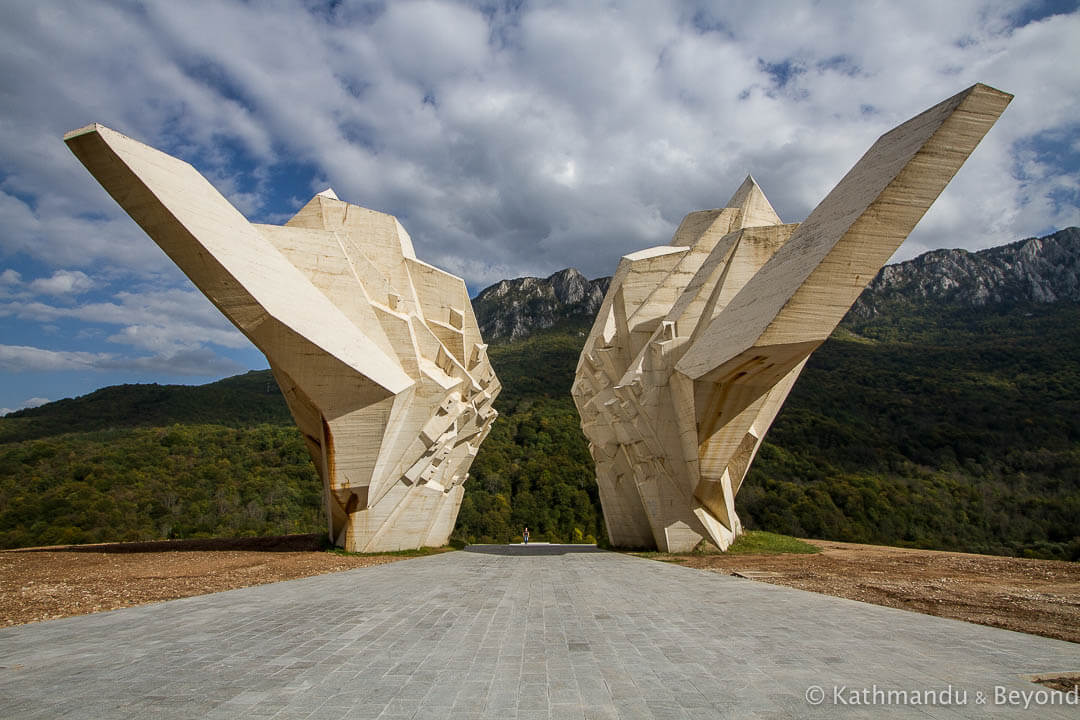
Monument to Fallen Fighters and Victims of Fascism from Slabinja
Slabinja, Croatia
Completed 1981
Architect Stanislav Mišić
Further reading: spomenik database: slabinja
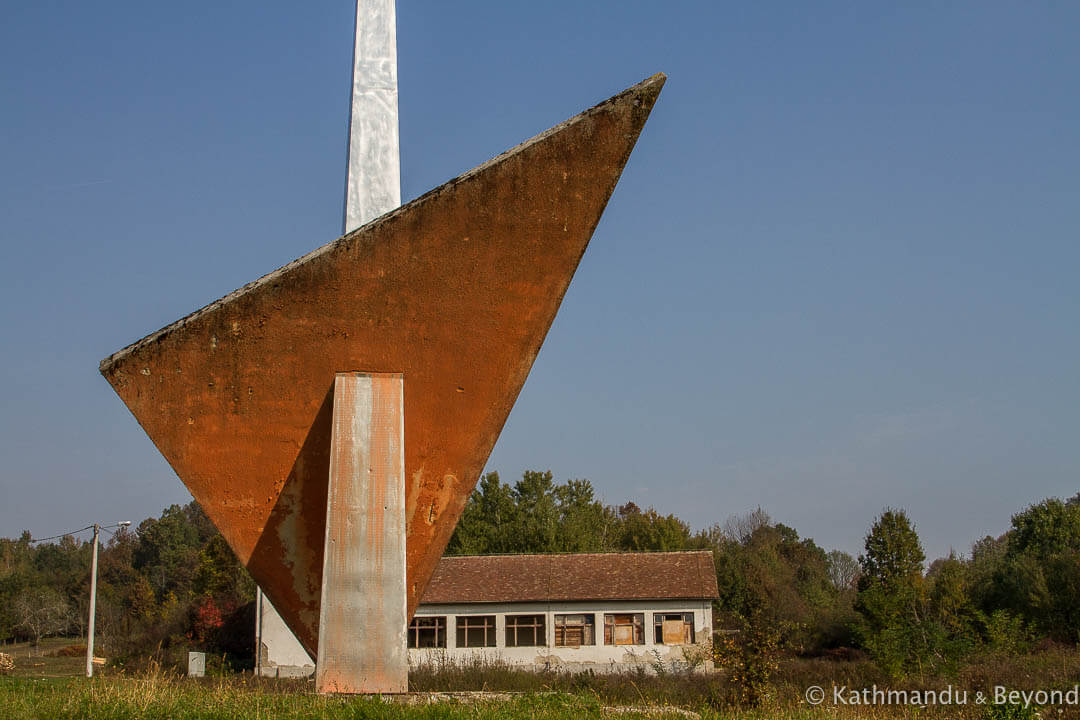
Monument to Liberty (Monument on Jasikovac Hill)
Berane, Montenegro
Completed 1977
Architect Bogdan Bogdanović
Further reading: spomenik database: berane
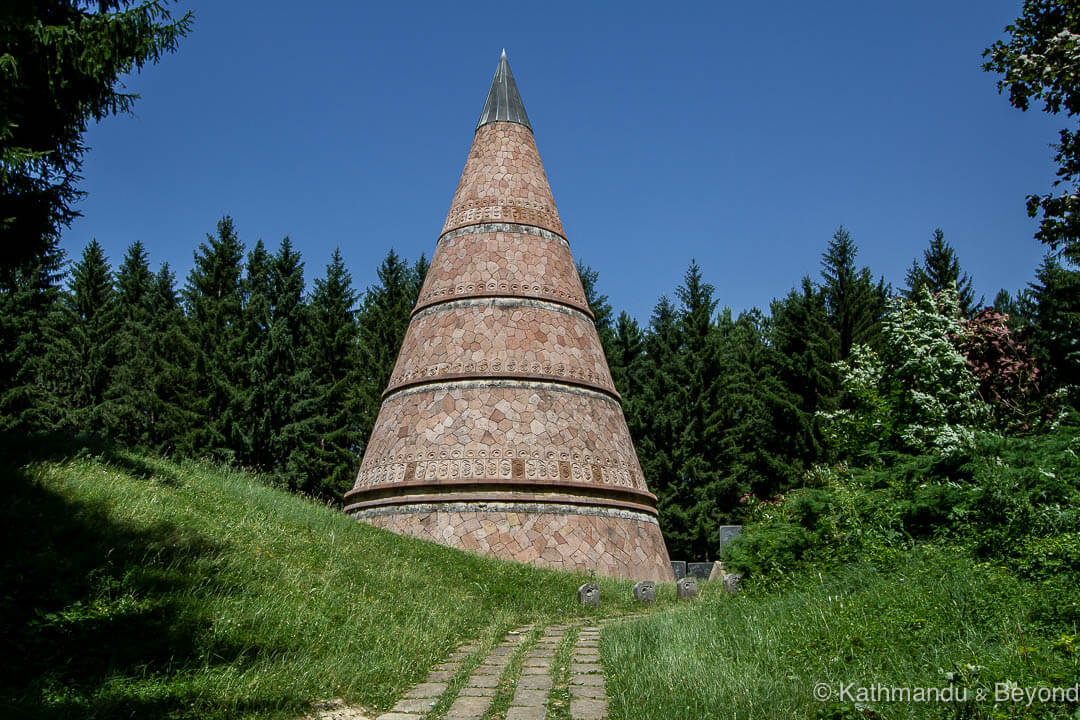
Mausoleum of Struggle and Victory
Čačak, Serbia
Completed 1980
Architect Bogdan Bogdanović
Further reading: spomenik database: cacak
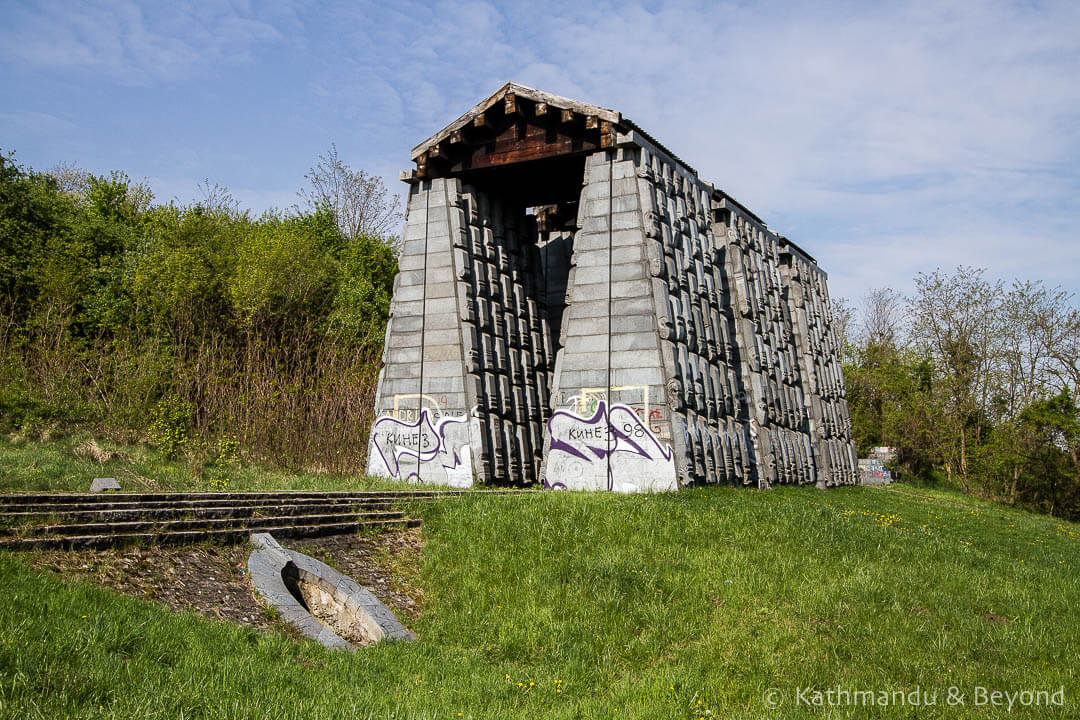
Monument to the Revolution
Kozara National Park, Bosnia & Herzegovina
Completed 1972
Architect Dušan Džamonja
Further reading: spomenik database: kozara
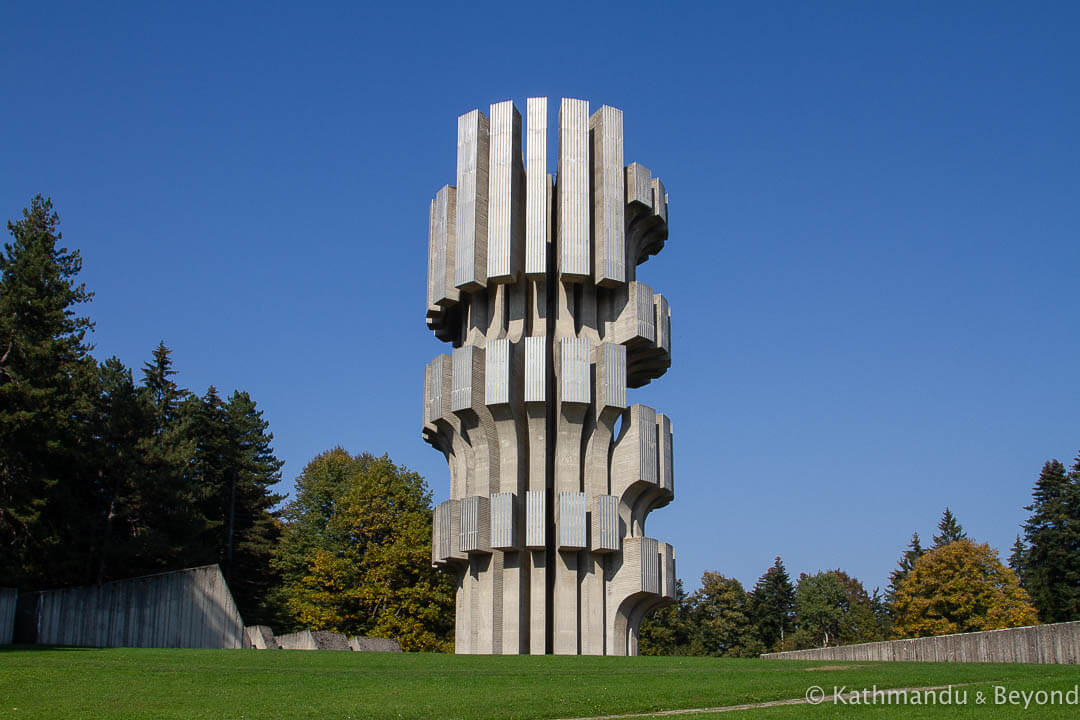
Monument to the Revolution (Monument to the Bosanska Krajina Partisan Hospital/Monument to Korčanica)
Grmeč, Bosnia & Herzegovina
Completed 1979
Architect Ljubomir Denković
Further reading: spomenik database: grmec
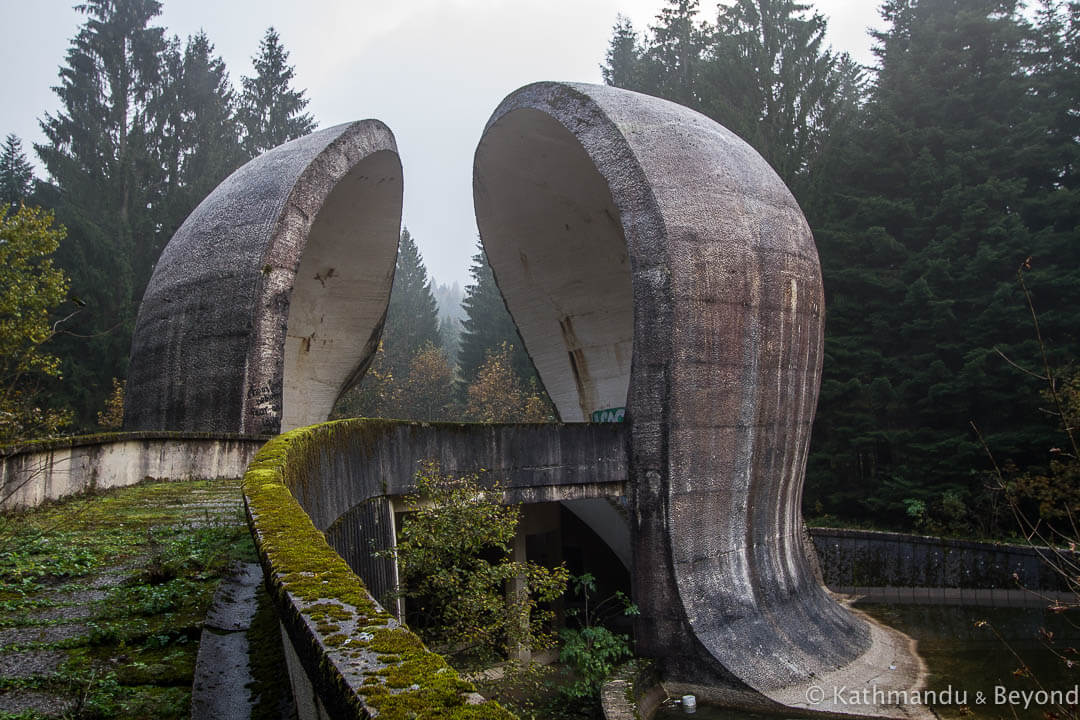
Monument to the Uprising of the People of Kordun and Banija
Petrova Gora National Park, Croatia
Completed 1981
Architects Vojin Bakić and Berislav Šerbetić
Further reading: spomenik database: petrova-gora
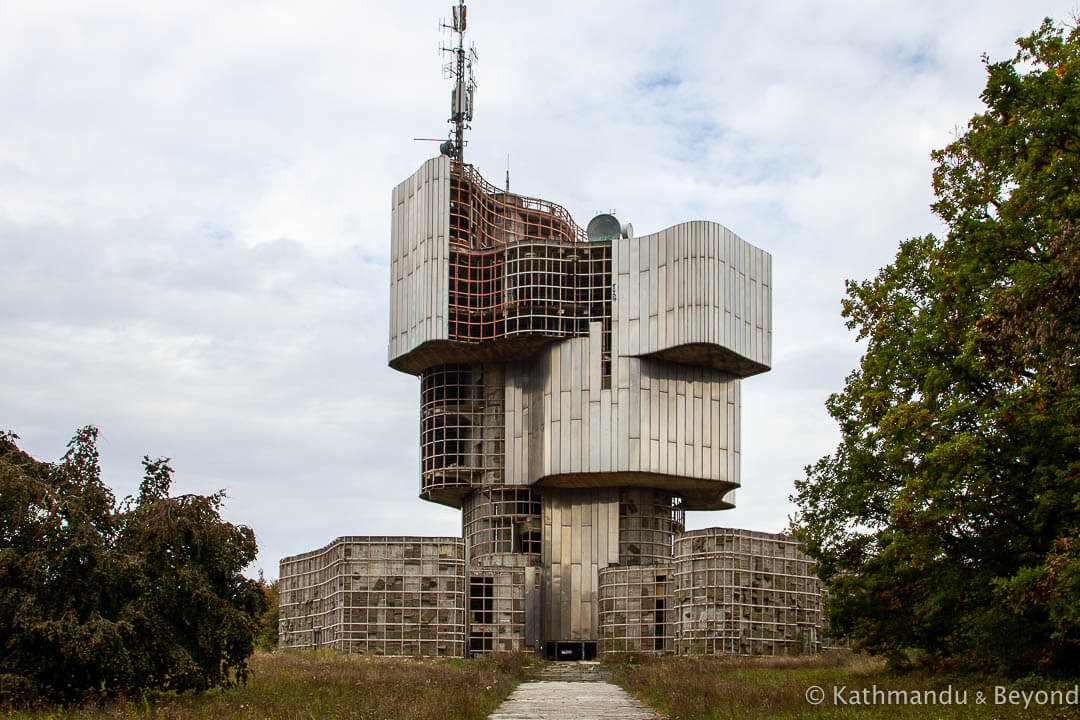
Monument to the Fallen Soldiers of the Kosmaj Partisan Detachment
Kosmaj Mountain, Serbia
Completed 1970
Architect Gradimir Medaković and Vojin Stojić
Further reading: spomenik database: kosmaj
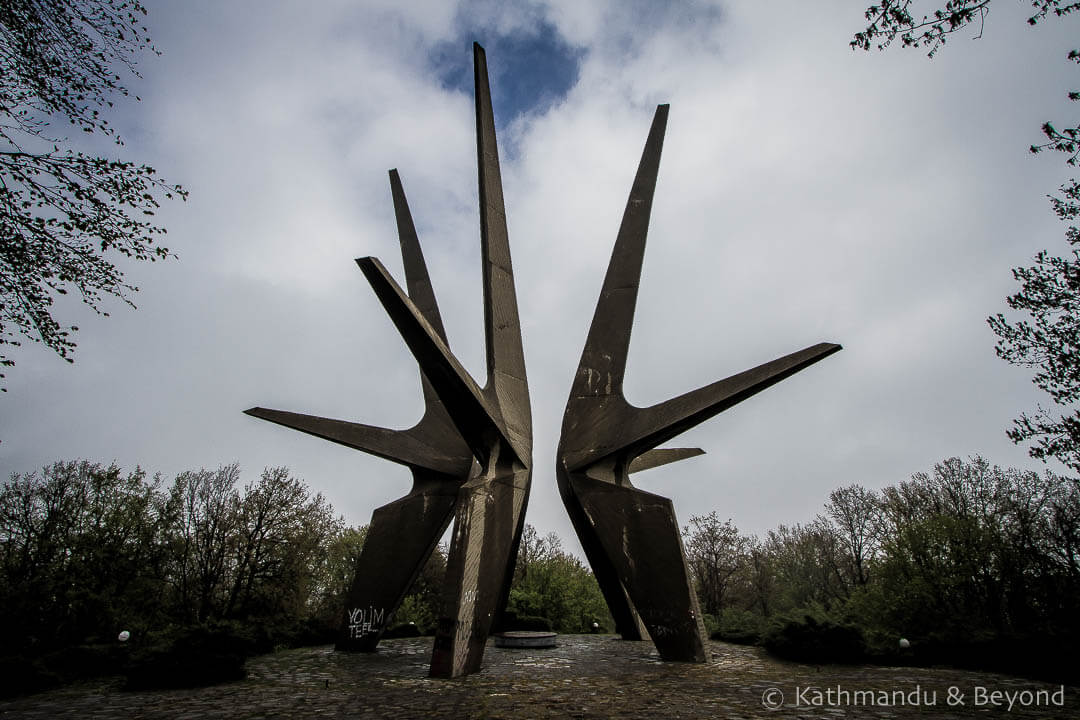
Courage – A Monument to the Fallen Soldiers of the Cacak Partisan Detachment
Ostra, Serbia
Completed 1969
Architects Miodrag Živković and Svetislav Licina
Further reading: spomenik database: ostra
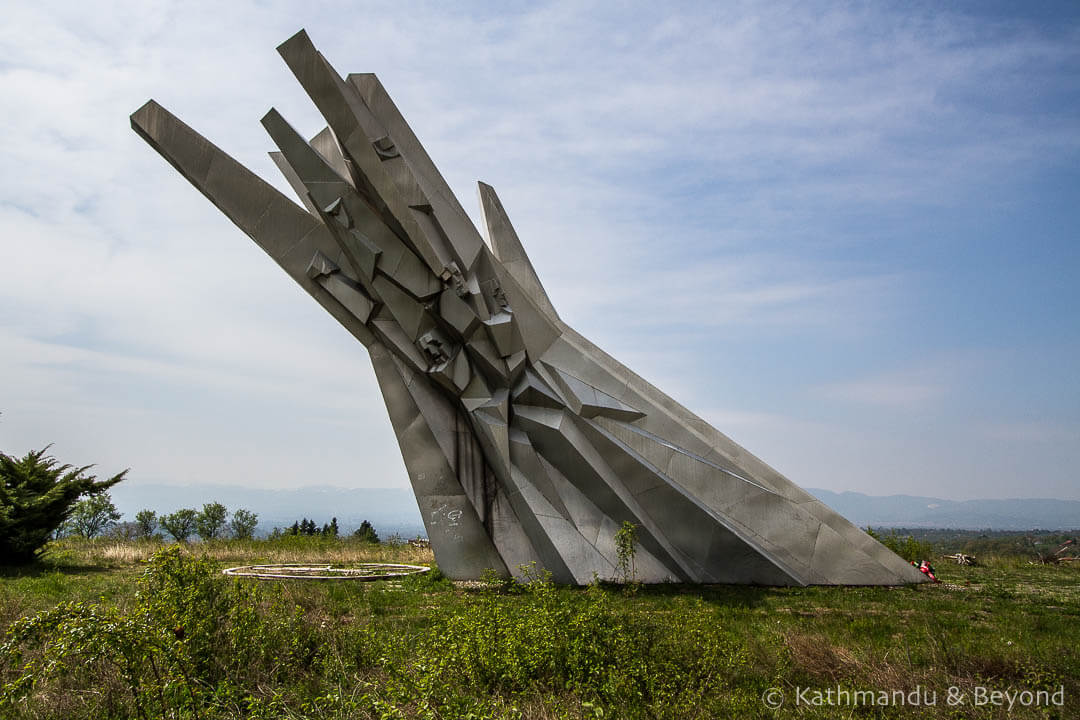
Monument to the Fallen Fighters of People’s Liberation War
Vogošća, Bosnia & Herzegovina
Completed 1969
Architects Petar Krstić and Zlatko Ugljen
Further reading: spomenik database: vogosca
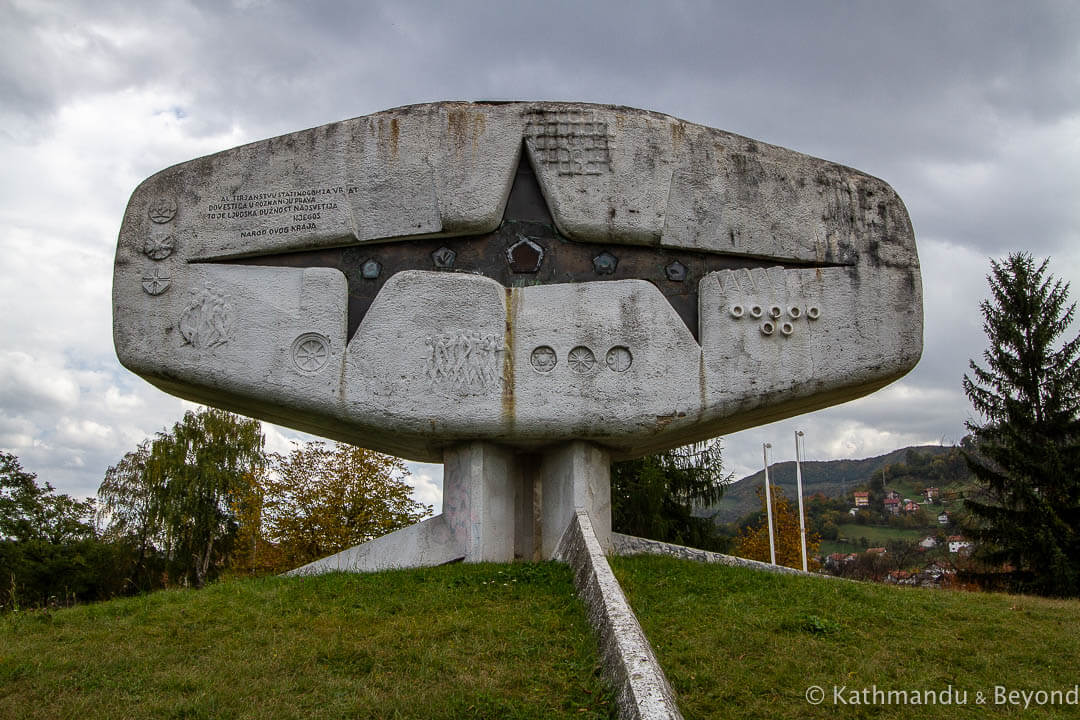
Šumarice Memorial Park (October in Kragujevac Memorial Park)
Kragujevac, Serbia
Created 1963
Lead architect Miodrag Živković
Further reading: spomenik database: kragujevac
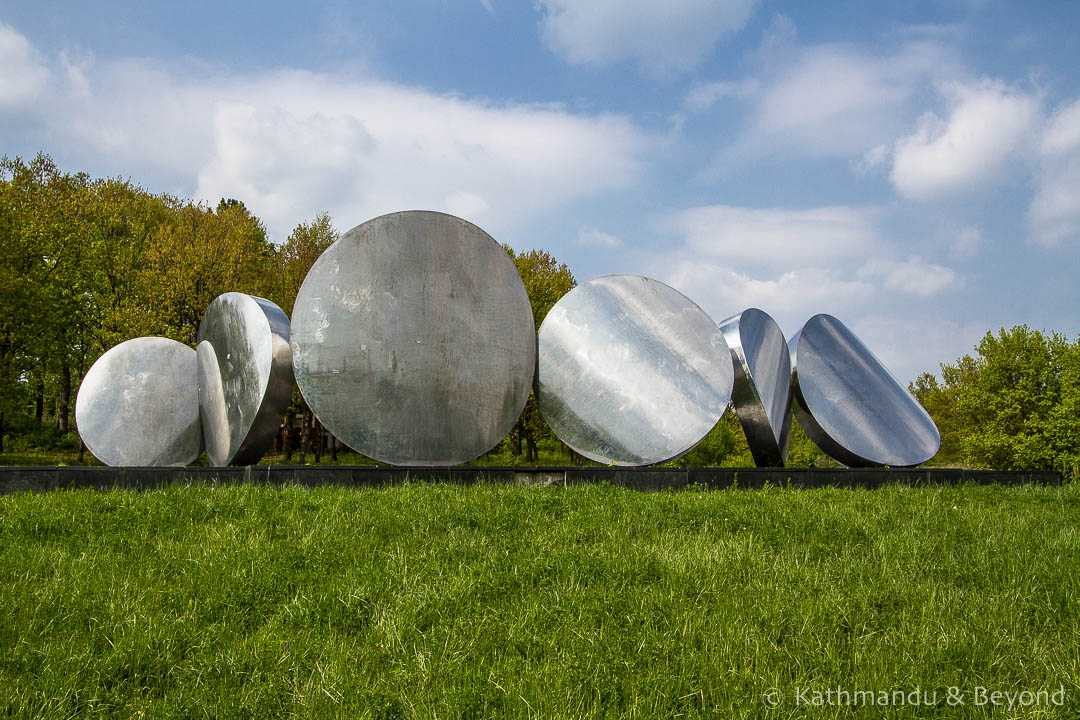
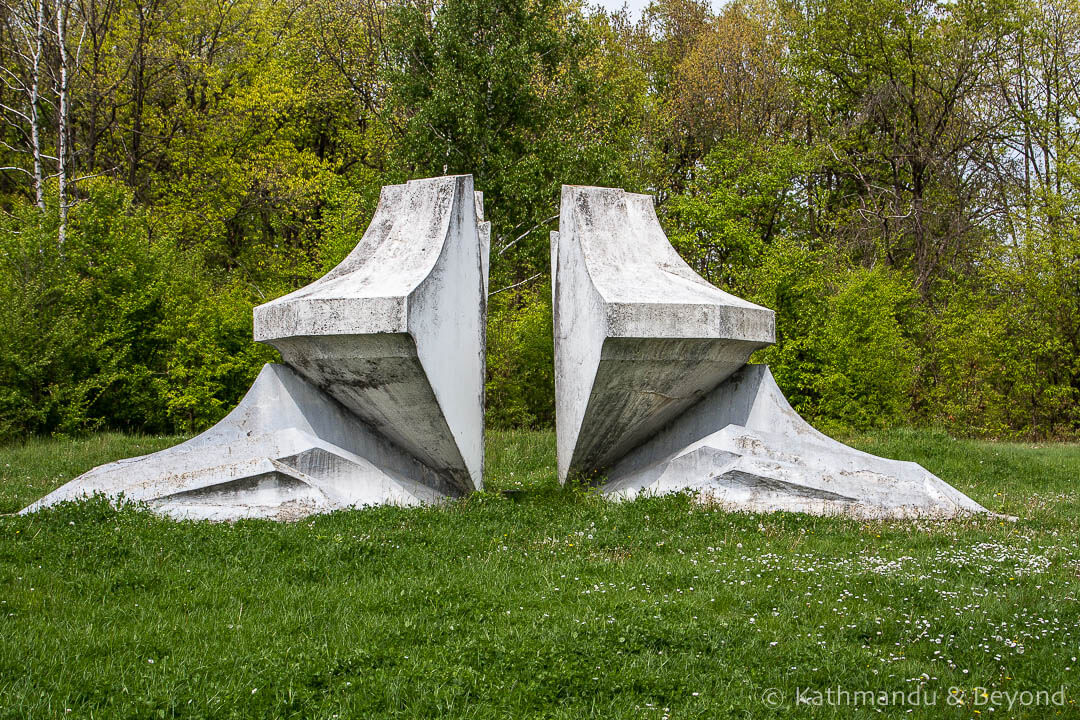
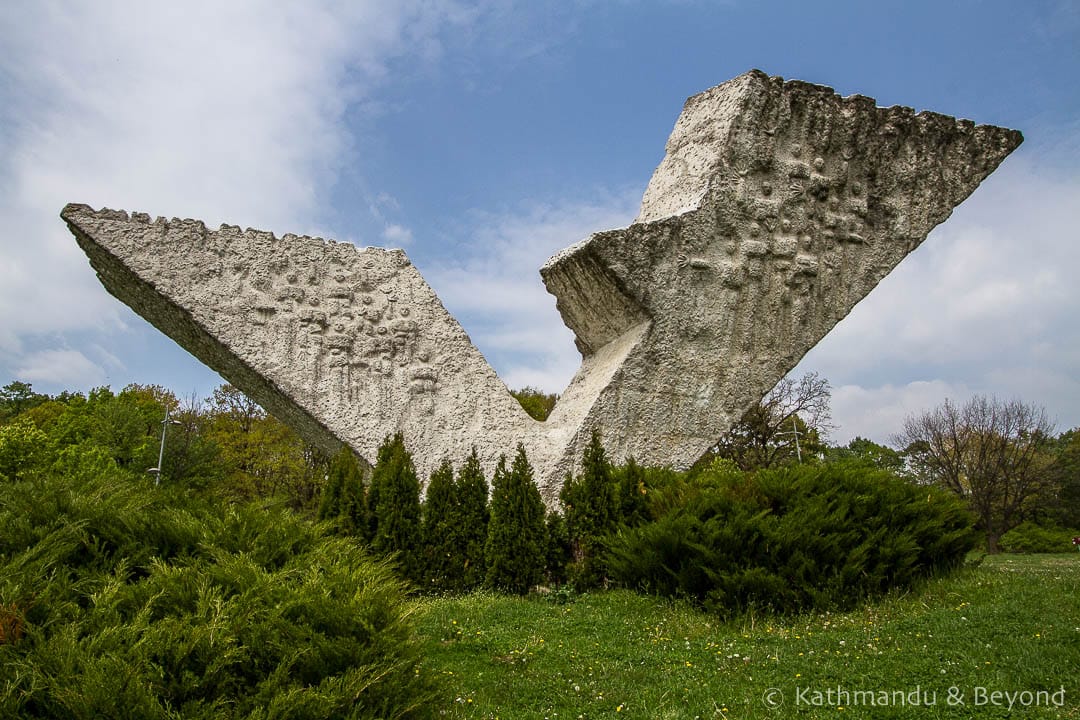
The Memorial Ossuary of Fallen Fighters
Kavadarci, North Macedonia
Complete 1976
Architect Peter Mulichkoski
Further reading: spomenik database:.kavadarci
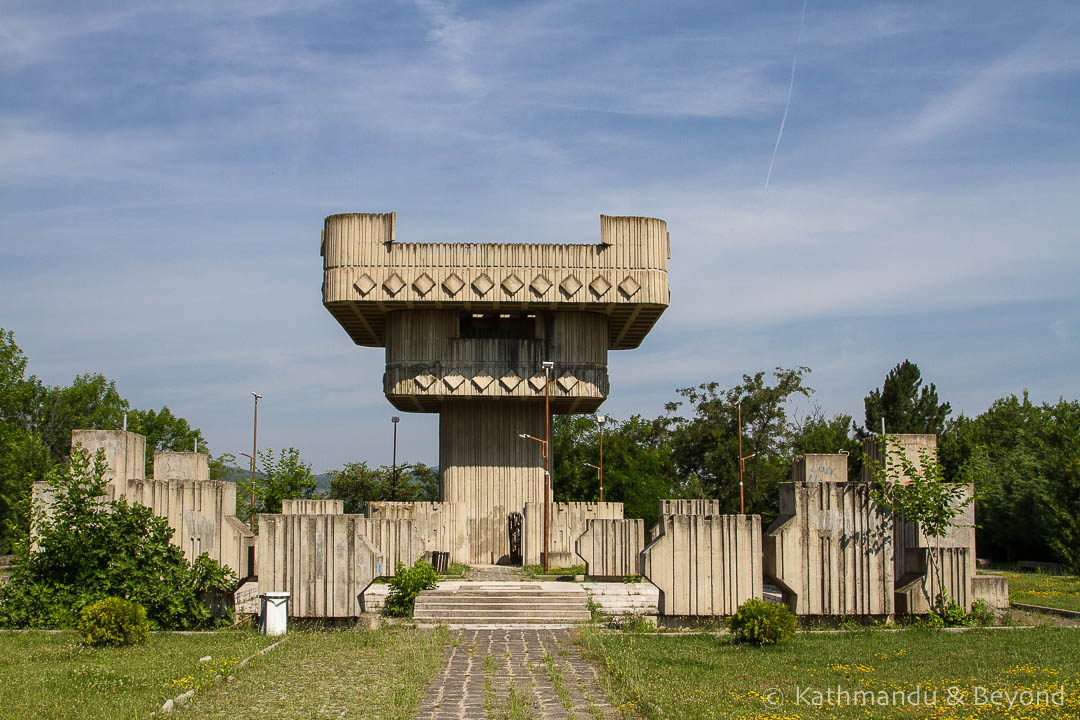
Kadinjača Memorial Complex
Užice, Serbia
Completed 1979
Architects Miodrag Živković and Aleksandar Đokić
Further reading: spomenik database: kadinjaca
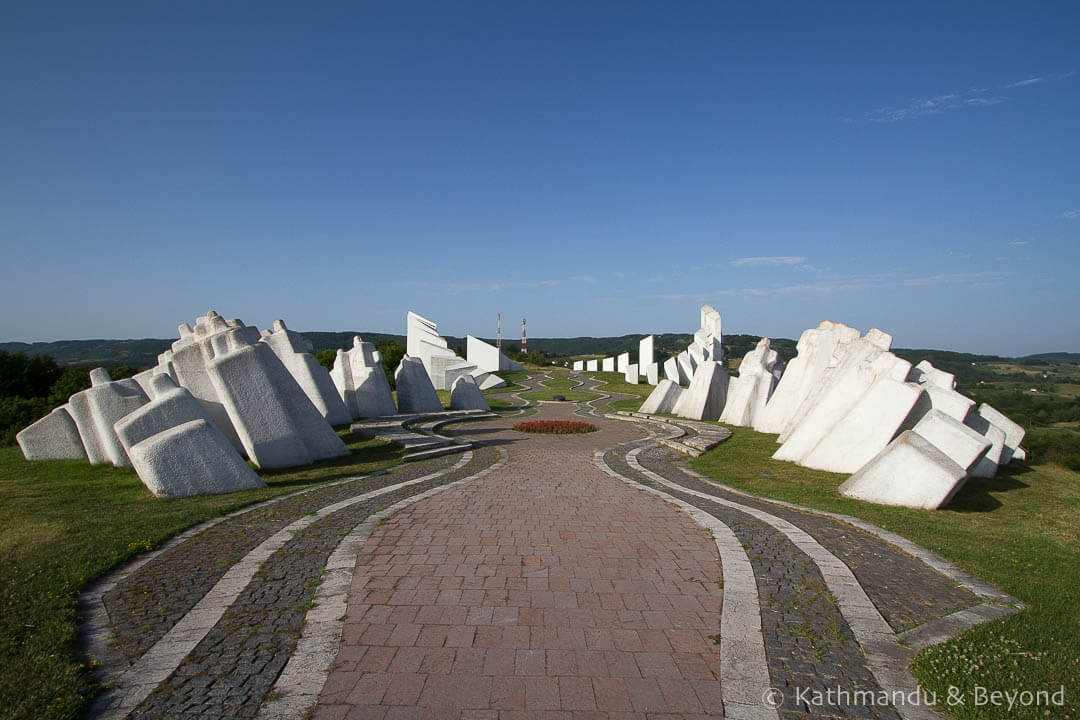
Necropolis for the Victims of Fascism (Monument on Smrike)
Novi Travnik, Bosnia & Herzegovina
Completed 1975
Architect Bogdan Bogdanović
Further reading: spomenik database: novi-travnik
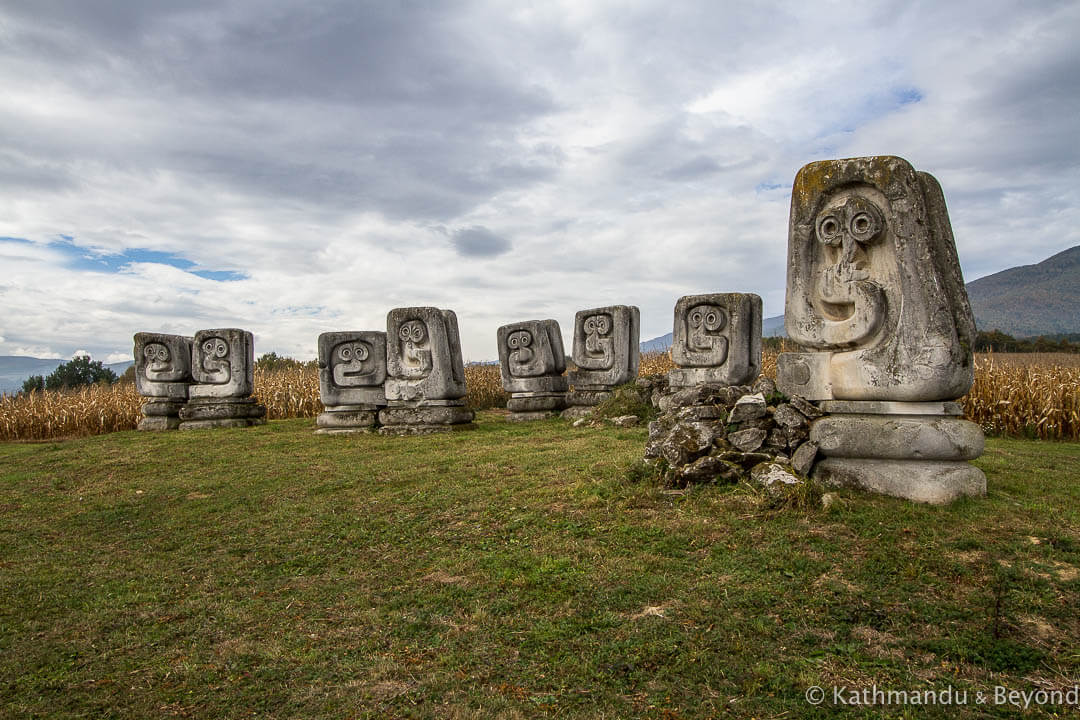
Monument to the Revolution
Leskovac, Serbia
Completed 1971
Architect Bogdan Bogdanović
Further reading: spomenik database: leskovac
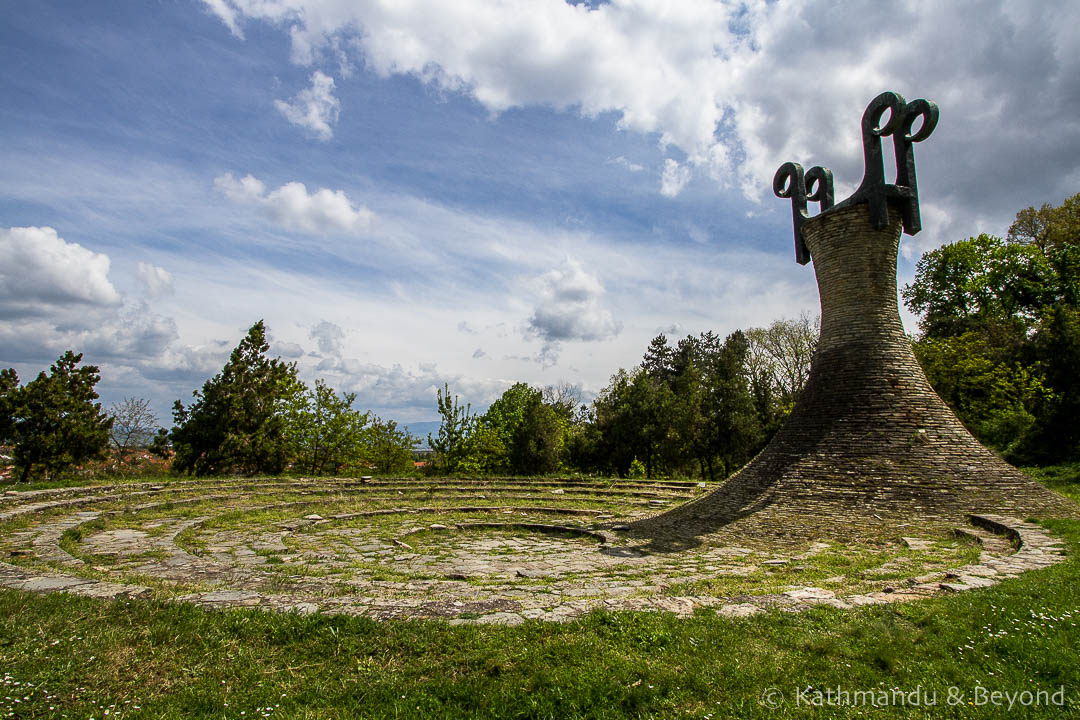
Seagull Wings Monument
Podgora, Croatia
Completed 1962
Architect Rajko Radović
Further reading: spomenik database: podgora
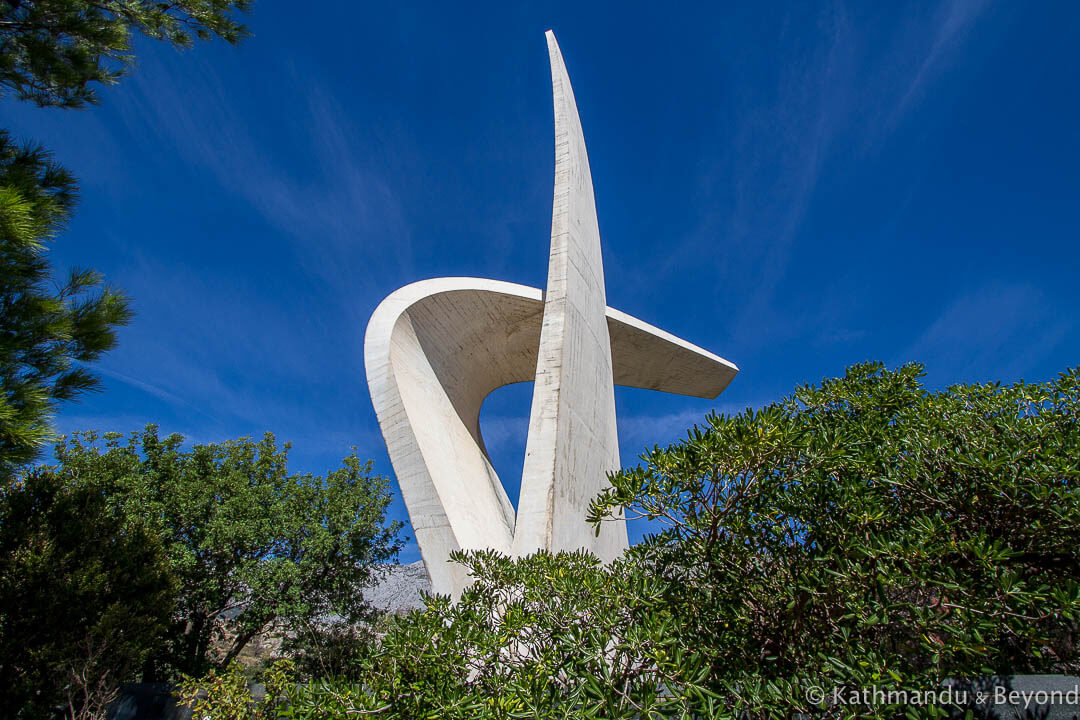
Stone Flower
Jasenovac, Croatia
Completed 1966
Architect Bogdan Bogdanović
Further reading: spomenik database: jasenovec
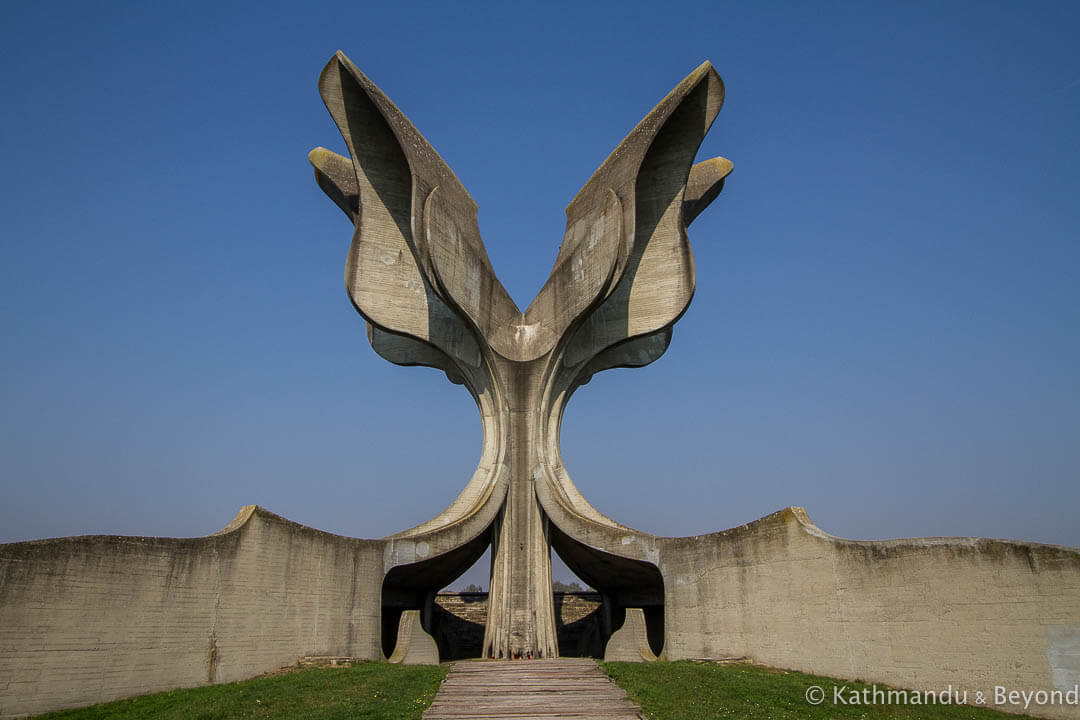
Slobodište Memorial Complex
Kruševac, Serbia
Completed 1965
Architect Bogdan Bogdanović
Further reading: spomenik database: krusevac
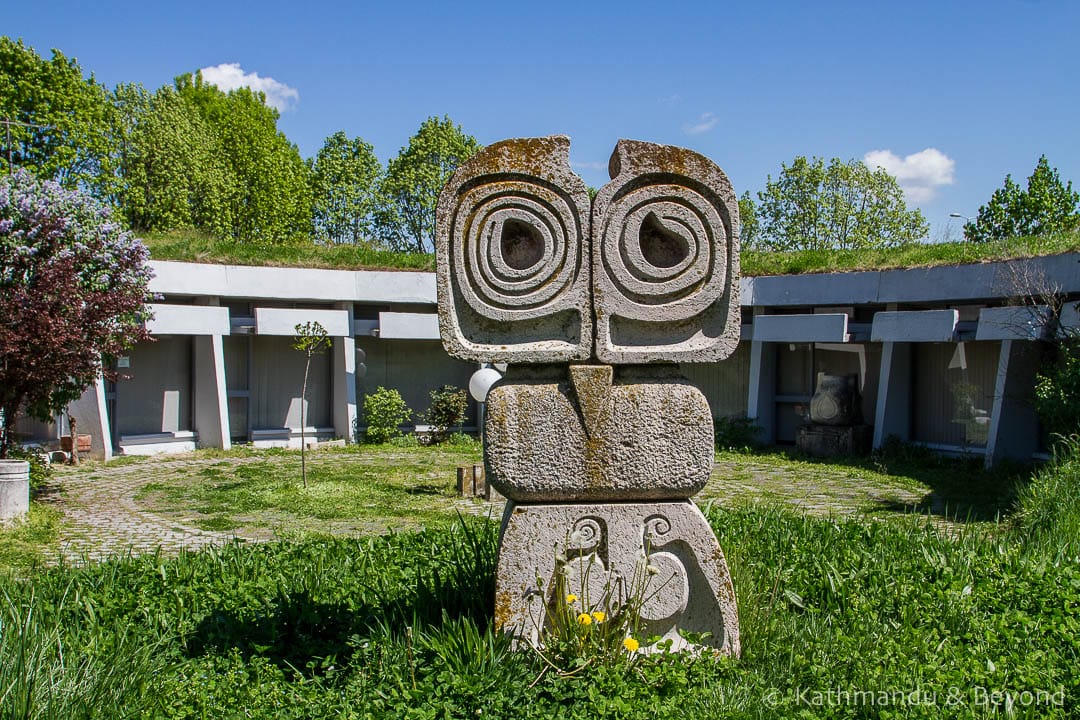
Burial Mound of the Unbeaten (Prilep Partisan Necropolis)
Park of the Revolution
Prilep, North Macedonia
Completed 1961
Architect Bogdan Bogdanović
Further reading: spomenik database: prilep
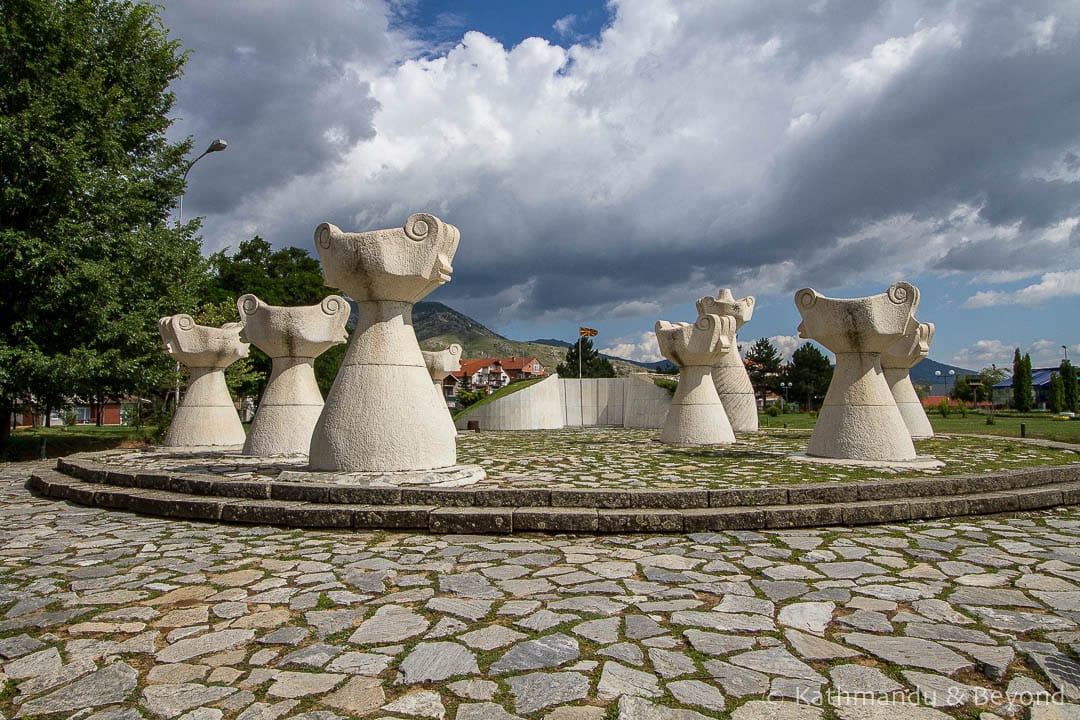
Ilinden Memorial (Makedonium)
Kruševo, North Macedonia
Completed 1974
Architects Jordan Grabulovski and Iskra Grabulovski
Further reading: spomenik database: krusevo
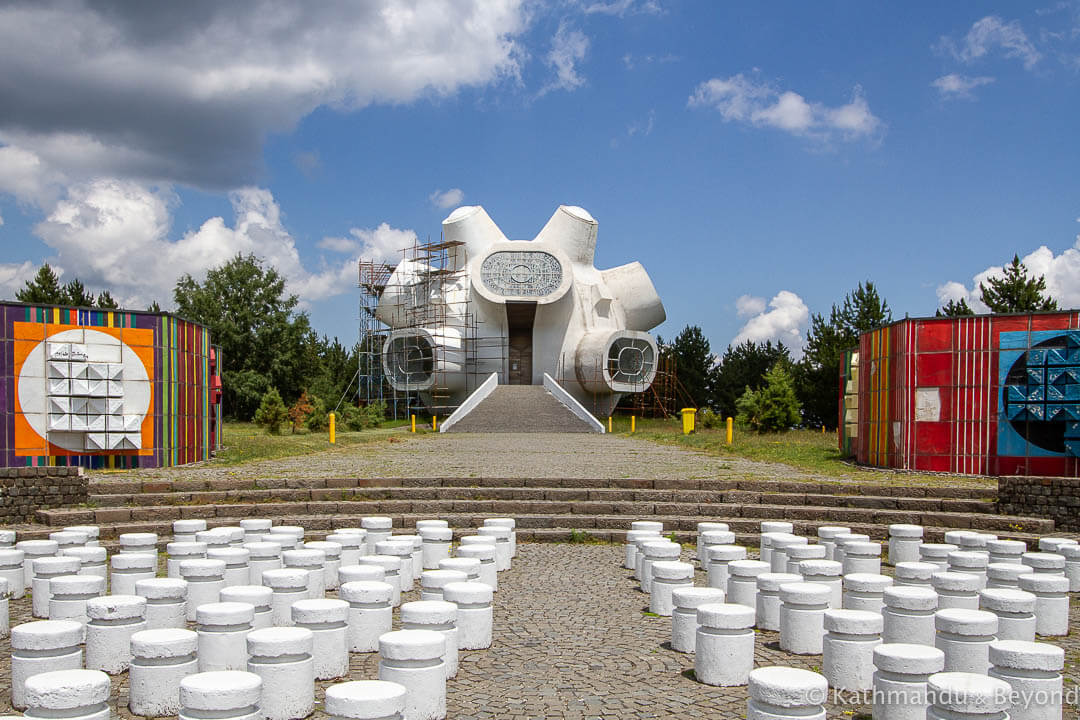
Spomen-dom (Kolašin Municipal Assembly)
Kolašin, Montenegro
Completed 1975
Architect Marko Mušič
Further reading: spomenik database: kolasin
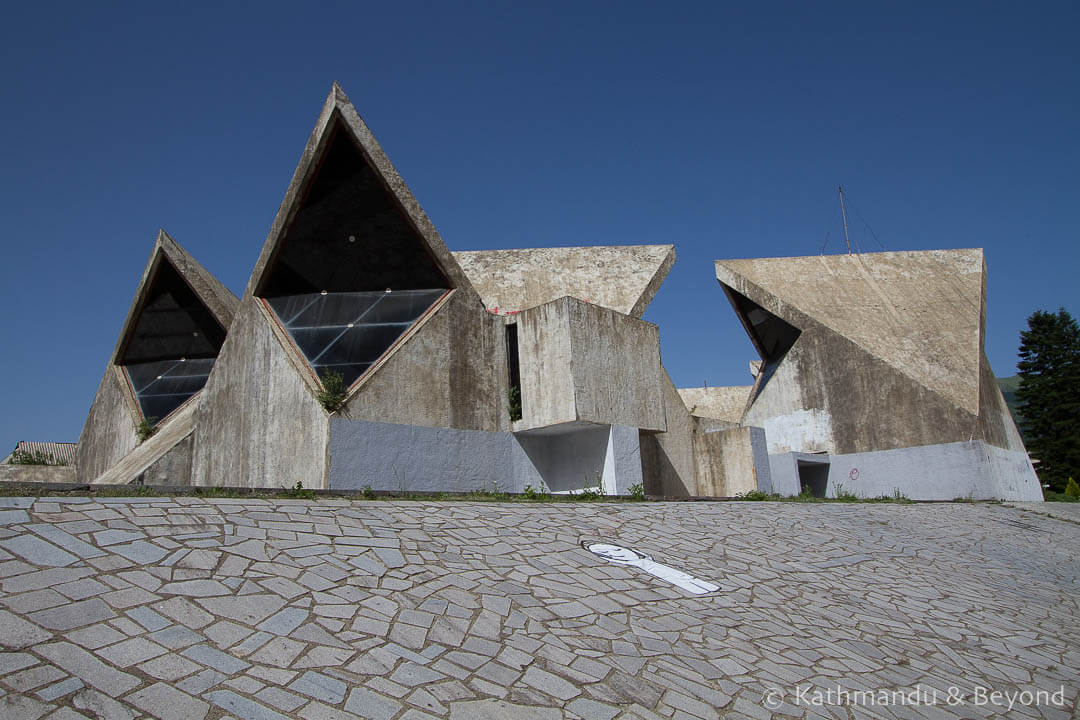
Monument to the Fallen Victims of the National Liberation War (‘The Fork’ or ‘The Monument to Hanged Patriots’)
Vranjske Njive, Montenegro
Completed mid-1970s
Architect Milorad Vukotić
Further reading: spomenik database: vranjske-njive
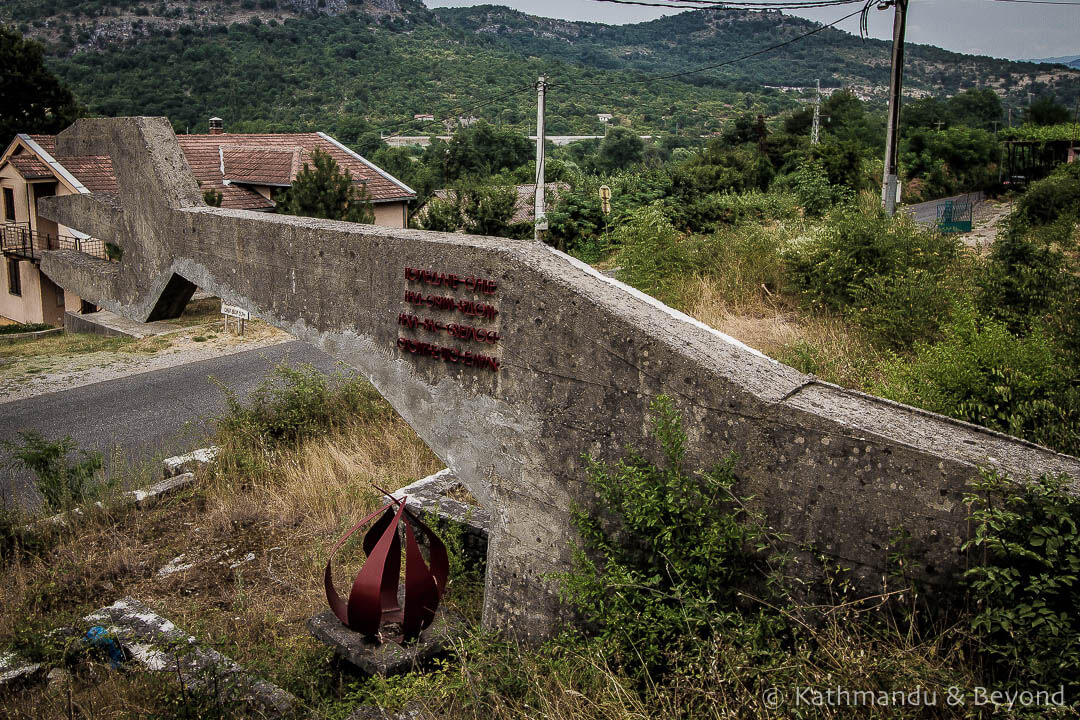
Monument to the Revolution of the People of Moslavina
Podgarić, Croatia
Completed 1967
Architect Dušan Džamonja
Further reading: spomenik database: podgarica
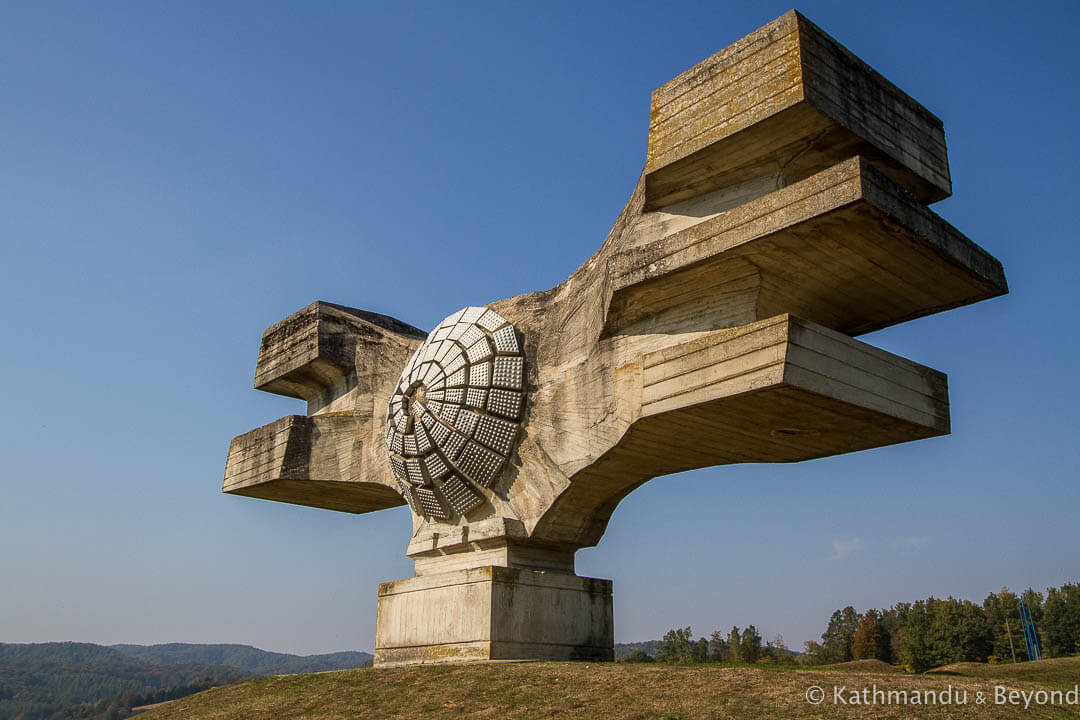
Mausoleum to the Fallen Insurgents against Fascism ‘The Sniper’ (Popina Monument Park)
Štulac, Serbia
Completed 1981
Architect Bogdan Bogdanović
Further reading: spomenik database: popina
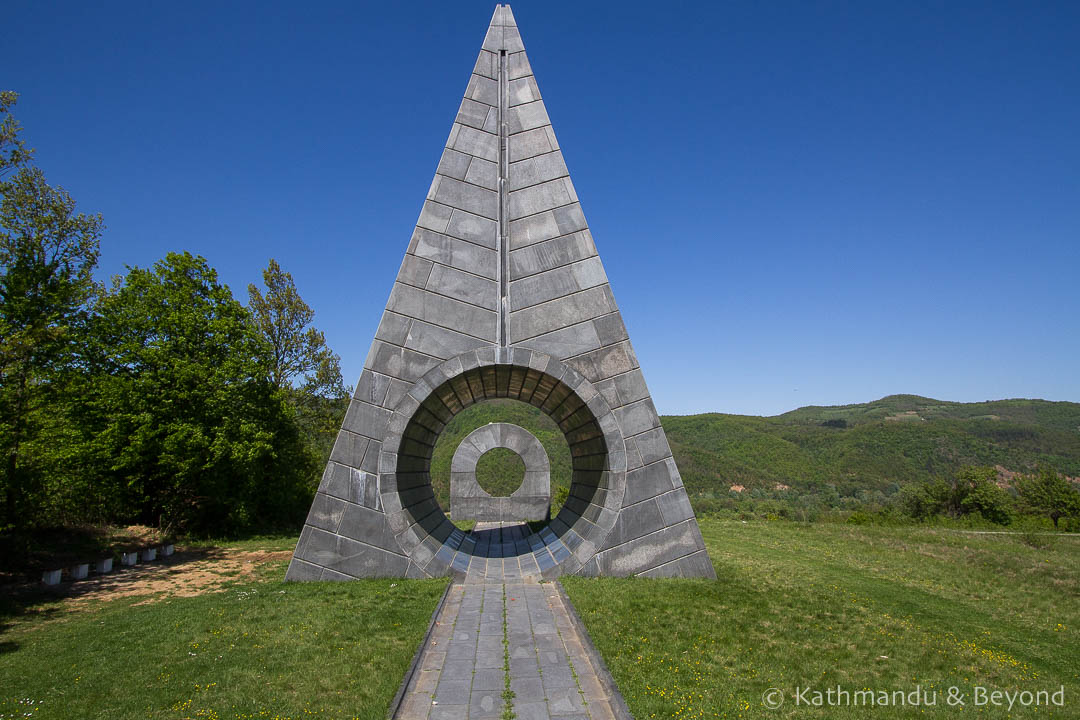
Monument to Fallen Soldiers (Monument on Trebjesa)
Nikšić, Montenegro
Completed 1982
Architect Ljubo Vojvodić
Further reading: spomenik database: niksic
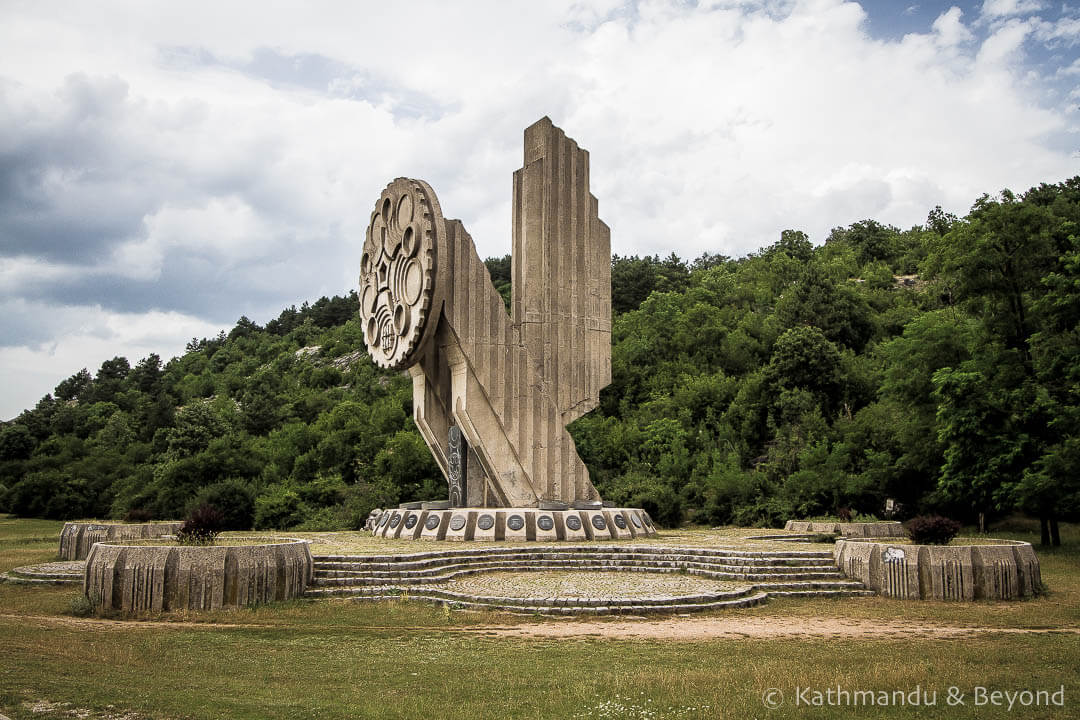
So, tell us, in the comment section below… which spomenik fascinates you the most? How many have you seen?
READ MORE OF OUR BLOG POSTS ABOUT THE BALKANS
WHY NOT PIN THIS POST…
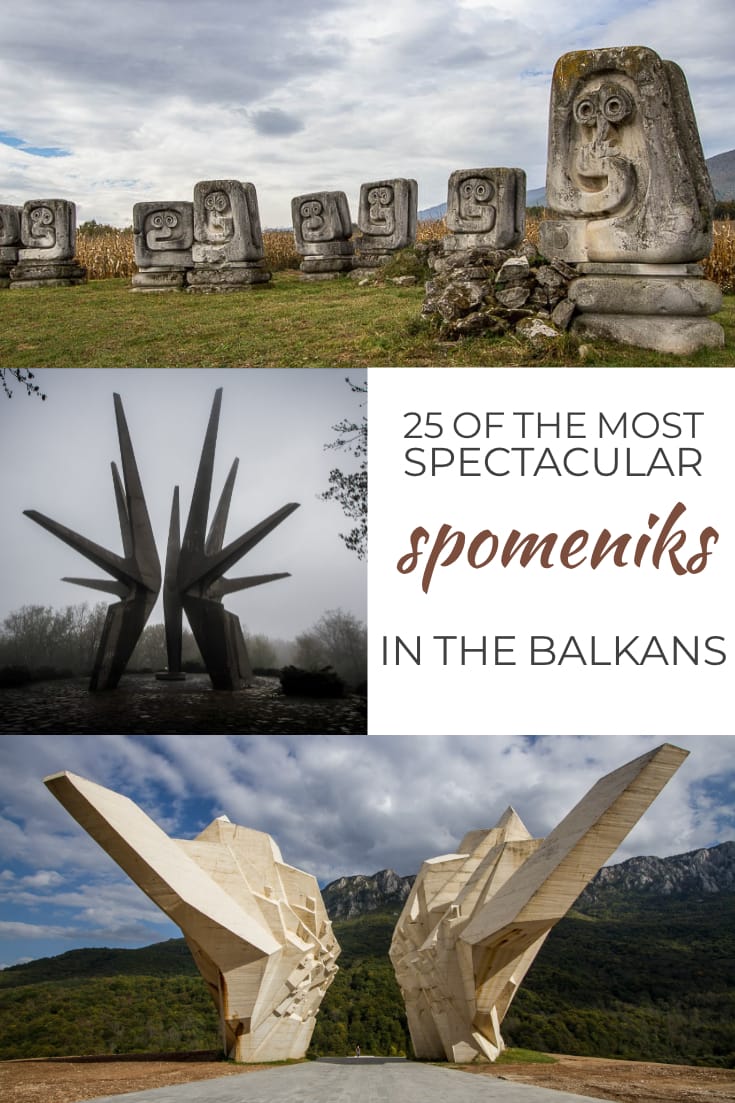
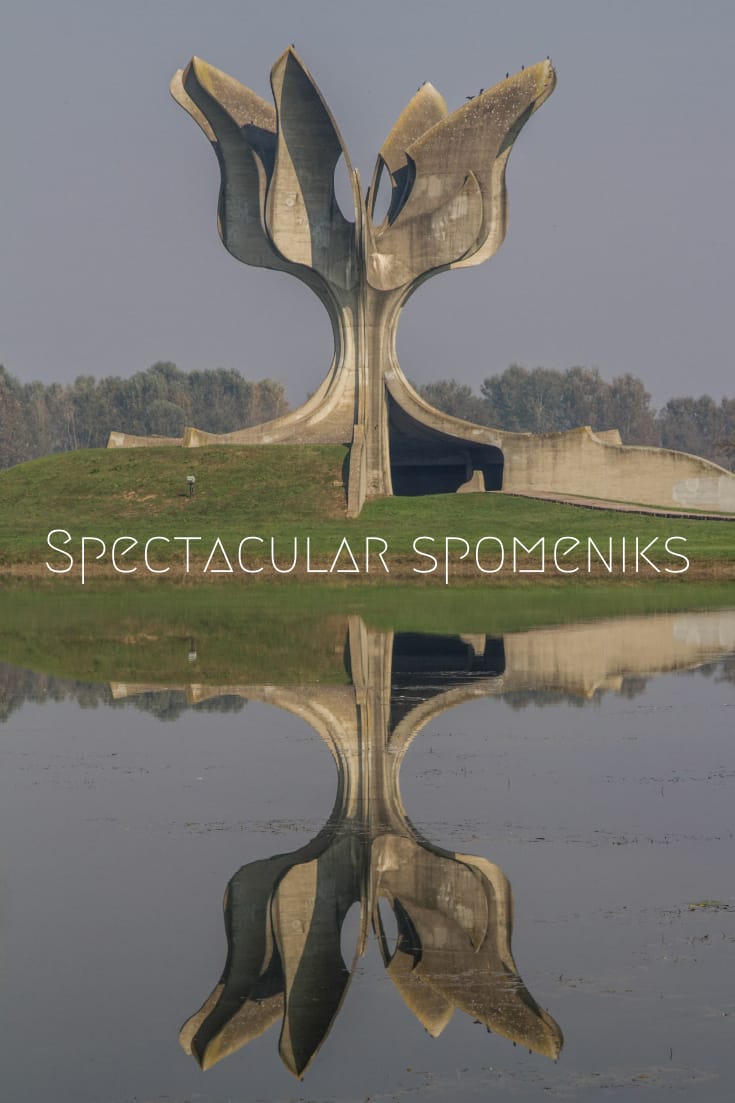
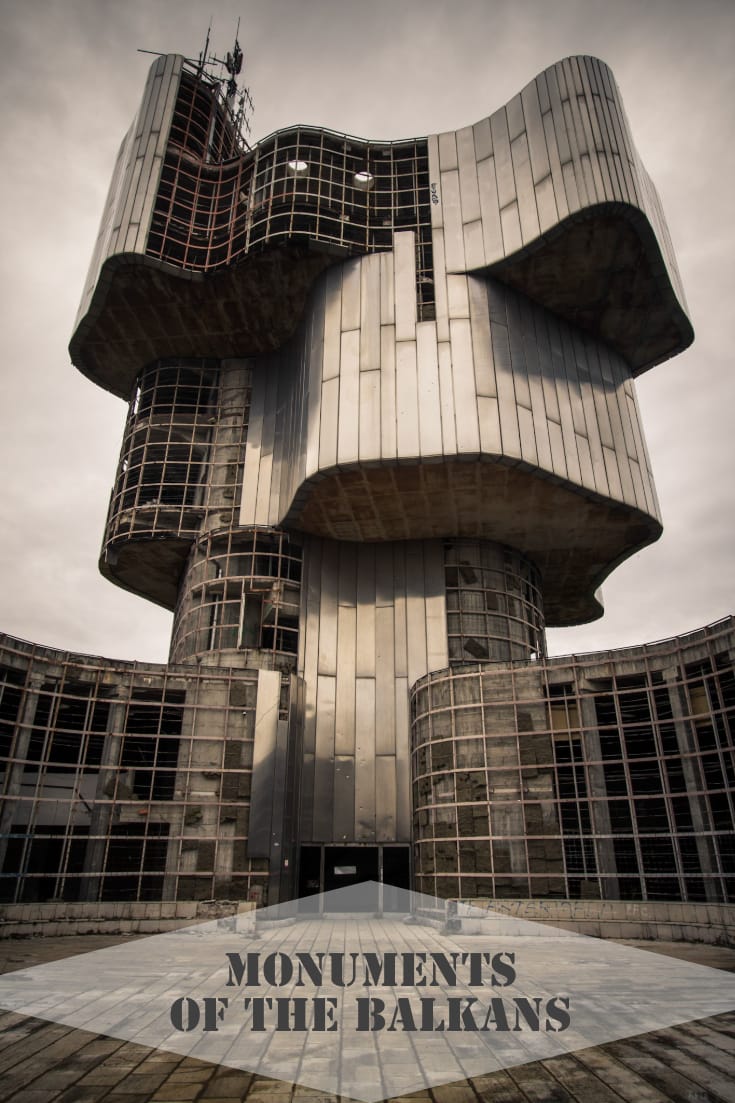
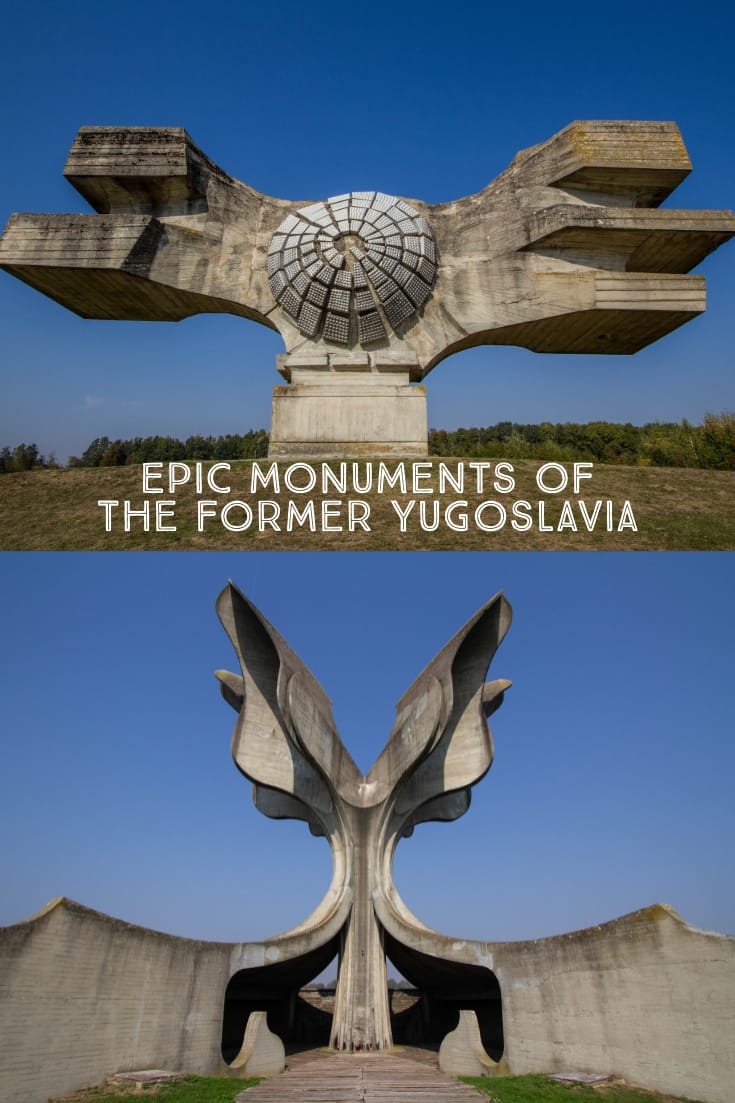

Wow, some really weird structures and I’m sure they could make a documentary about aliens invading earth and building these things and that people would totally believe it.
I found the history interesting though. Didn’t know the origin of these spomeniks.
You guys are pretty hardcore with your spomenik fetish! 🙂
Hi Frank, yep, there’s some wonderfully strange shapes to many of the spomeniks we’ve seen to date. I hadn’t really considered that we might have a spomenik fetish but I guess you are right, given the amount we have seen plus the fact that we have another trip in the pipeline. It’s a great way to get off the beaten track in the Balkans mind!!
Hi Mark and Mark’s Lady :), thank you so much for these beautiful photos, thank you for being interested in this great era, a time that today’s nacionalist local leaders would tag as a undemocratic “dark age”, which should be forgotten asap. You know the situation specially in Bosnia. We should call the thing with it’s true name. Europe and USA allowed themselfs to create a Nazi-System not even 50 years after WWII atrocities worldwide. It’s a huge shame. Nowdays, Yugoslavia’s antifasits are second degree citizens (Strassbourg court of law!), just because I don’t or can’t orden myself in one of three priviledged ethnicities. Same as with “spomeniks” Greeting from Sarajevo
Greetings from Mark’s lady, Kirsty 😉 Thank you for your comment; it’s always interesting to hear opinions from all perspectives.